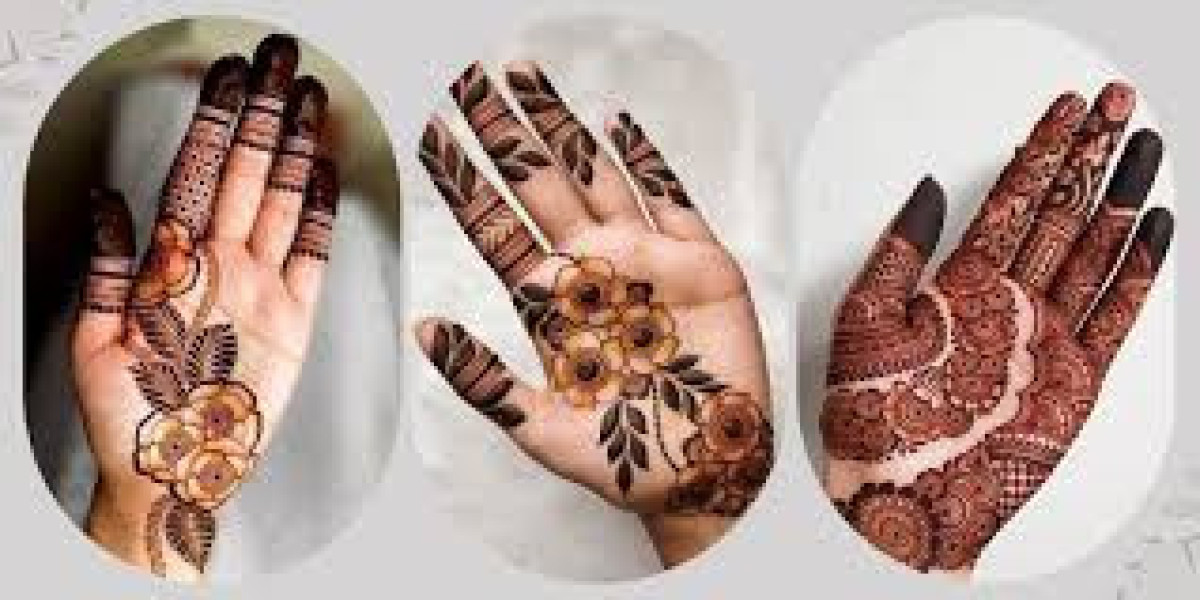The Rich Cultural Significance of Mehndi
Mehndi, also known as henna, is more than just body art—it’s a cultural expression that’s been passed down through centuries. In South Asian, Middle Eastern, and even African traditions, mehndi represents joy, blessings, and prosperity. From weddings to festivals, it’s impossible to imagine celebrations without intricate henna designs adorning hands and feet.
Think of mehndi as a language of its own. Each swirl, paisley, or flower tells a story. In Indian culture, it’s said that the darker the mehndi stain, the deeper the love between a couple. In Middle Eastern traditions, bold floral patterns symbolize fertility and beauty. The beauty of mehndi lies in how it bridges art and tradition, creating timeless memories.
If you’ve ever admired the creativity of intricate patterns and wondered where to find the latest inspirations, platforms like All Mehndi Designs showcase endless variations that cater to every taste and occasion.
Popular Types of Mehndi Designs
Mehndi has evolved into countless styles, each with its own charm and uniqueness. While they share the same foundation—henna paste—the patterns and artistic strokes vary from culture to culture. Let’s break down the most popular ones.
Traditional Indian Mehndi Designs
Indian mehndi is known for its dense, elaborate patterns. Every inch of the hand and foot is often covered, leaving little to no empty space. Imagine peacocks dancing through vines, flowers interwoven with paisleys, and geometric borders sealing the art. This type of design is especially common in weddings where the bride’s hands and feet are a canvas for storytelling. Sometimes the groom’s initials are hidden within the designs, adding a playful element.
Arabic Mehndi Designs
Arabic mehndi takes a different approach—it’s bold, less cluttered, and more free-flowing. The designs usually feature big floral motifs with leafy trails stretching diagonally across the hands. Unlike Indian mehndi, Arabic designs leave plenty of skin visible, giving a lighter, breezier look. It’s a favorite for Eid and casual occasions because it can be applied quickly yet still looks striking.
Pakistani Mehndi Styles
Pakistani mehndi is like a blend of Indian and Arabic styles. It features dense, intricate details but also maintains flow and elegance with floral and leafy touches. This style often incorporates mandalas, domes, and mosque-inspired shapes, reflecting cultural heritage. For weddings, Pakistani designs typically extend from fingertips to elbows and sometimes even cover the back.
Modern Trends in Mehndi Art
As with fashion, mehndi designs evolve with time. Today’s generation is leaning toward creative, experimental styles that combine tradition with modern flair.
Minimalist Mehndi Patterns
For those who love simplicity, minimalist mehndi is making waves. Instead of fully covering the hand, these designs use delicate strokes, tiny florals, or geometric outlines. Think of them as “tattoo-like” mehndi styles—chic, subtle, and perfect for everyday wear.
Fusion Mehndi Styles
Fusion designs are exactly what they sound like—a mix of different styles. For instance, combining Arabic boldness with Indian density or adding modern motifs like dreamcatchers, mandalas, or even initials. This is a growing trend among brides who want something fresh and unique, ensuring their mehndi stands out.
Mehndi for Special Occasions
No celebration feels complete without mehndi. From weddings to religious festivals, it’s a symbol of happiness, beauty, and togetherness.
Bridal Mehndi
Bridal mehndi is the crown jewel of mehndi art. It’s detailed, time-consuming, and often covers the bride’s hands, arms, and feet. Some brides opt for traditional motifs like peacocks, lotuses, or elephants, while others go for personalized touches like the groom’s portrait or their wedding date. It’s not just decoration—it’s a ritual marking the bride’s journey into a new chapter.
Festival Mehndi
During festivals like Eid, Diwali, or Karva Chauth, mehndi takes center stage. While bridal mehndi is elaborate, festival mehndi is often lighter and quicker to apply. Arabic designs are particularly popular during festivals because they’re stylish yet less time-intensive.
Step-by-Step Guide to Applying Mehndi
Applying mehndi might seem intimidating at first, but with a little patience, anyone can master it.
Preparing the Skin
Before starting, wash your hands thoroughly and dry them completely. Avoid lotions or oils because they create a barrier that prevents the henna from staining deeply. Some people even rub lemon juice or apply eucalyptus oil to help darken the stain.
Mixing the Perfect Mehndi Paste
The magic of mehndi lies in its paste. Fresh henna powder mixed with lemon juice, sugar, and essential oils like lavender or clove creates a smooth, lump-free paste. Once ready, it’s filled into cones for easy application. Always let the paste rest for a few hours before using—it enhances the color.
Tips to Make Mehndi Last Longer
After applying mehndi, patience is key. Don’t rush to wash it off. Instead, keep the paste on for at least 6–8 hours. Wrapping your hands with tissue or tape can help keep it in place overnight. Once it dries and flakes off, avoid water for as long as possible. Natural tricks like applying a sugar-lemon solution or steaming your hands over clove smoke can deepen the color.
Common Mistakes to Avoid When Applying Mehndi
Even experienced mehndi lovers make mistakes. One common error is applying on oily or dirty skin, which reduces stain quality. Another is removing the paste too early or washing hands with soap immediately afterward. Using low-quality henna powder or cones also leads to dull stains. Always invest in fresh, natural henna rather than chemical alternatives.
Conclusion
Mehndi is more than an art—it’s a tradition, a celebration, and a form of self-expression. Whether you prefer traditional Indian designs, bold Arabic strokes, or modern minimalistic styles, there’s a mehndi pattern for every personality and occasion. Next time you’re preparing for a wedding, festival, or just want to adorn your hands with beauty, remember that mehndi is not just decoration—it’s a story painted on your s














